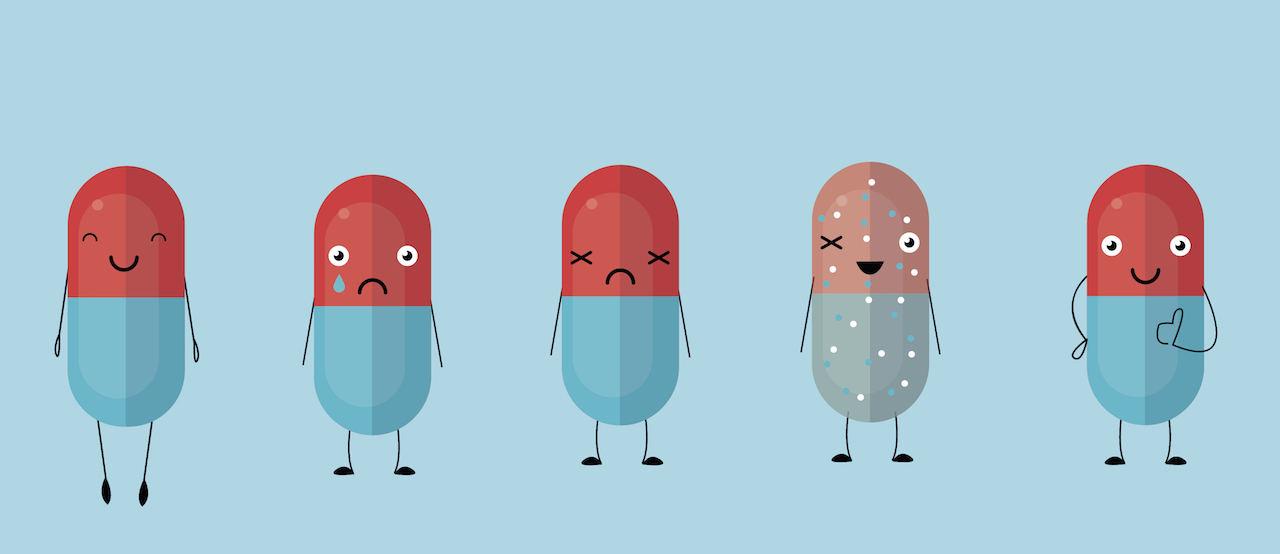You’re struggling to keep up with your assignments, exams and part-time job. You’re in desperate need of a jolt to your system or something to help you unwind, so you turn to your favourite upper or downer.
It may help in the moment, but how much do you know about that stuff you’re swallowing, sniffing or smoking?
First you’re up…
Uppers are drugs known for their physically and mentally stimulating effects. They affect most of the basic processes in your body including your temperature, heart rate and breathing. They also stimulate the reward centres in your brain.
Uppers flood your central nervous system with dopamine and noradrenaline, the happy messengers of the brain. This boosts your alertness, mood and energy levels. Unfortunately, this effect is temporary and once it wears off, you’re left feeling exhausted and depressed. You may feel listless and disconnected.
Uppers can cause your body to produce less dopamine and noradrenaline naturally, which can feed the need to keep using them, just so you can feel “normal”.
Uppers include:
- Caffeine
- Nicotine
- Cocaine
- Alcohol (although this can also be used as a downer)
Then you’re down…
Downers are drugs that slow or inhibit natural bodily functions, causing you to feel relaxed and impulsive. There are two major classes of downers: opiates and sedative-hypnotics.
Opiates include drugs like heroin, morphine, and other powerful pain medications. They increase the levels of dopamine you produce, heightening those feelings of pleasure and relaxation. If opiates are used too often and for too long, you may feel detached and depressed.
Sedative-hypnotic downers are drugs used to make you sleep. This can include medications to treat insomnia and sedation during medical procedures. Sedative-hypnotics can make you feel drowsy and euphoric, and inhibit your movement and speech.
Downers include:
- Muscle relaxants
- Antihistamines
- Alcohol
The dark side of uppers and downers
Both uppers and downers have a high potential for addiction. They have a high risk of overdose, and can be dangerous and even lethal if misused and abused.
Research published in Substance Abuse Treatment for Persons with Co-occurring Disorders, says that these drugs can cause a substance-induced mood disorder. “Substance-induced disorders are distinct from independent co-occurring mental disorders in that all or most of the psychiatric symptoms are the direct result of substance use.”
Make your mood work for you
Forget the drugs. Try these natural, pill-free ways to:
Boost your energy levels:
- Work up a sweat. Exercise sends oxygen and nutrients to your body’s cells. This helps your heart and lungs work more efficiently, which can give you more energy.
- Iron up. Iron is essential for carrying oxygen to your body’s cells, where it can be used to produce energy. Munch on dried fruit or nuts the next time you need a quick pick-me-up.
Feel happier:
- Sing your heart out. Singing releases endorphins, the feelgood chemicals in the brain, which can make you feel happier in an instant.
- Soak up some sun. Your body makes Vitamin D when it’s exposed to the sun. Vitamin D encourages your body to produce serotonin, the hormone that makes you feel happy.
Relax:
- Have a cup of chamomile tea. Chamomile is known to calm your mind and body, ease stress and anxiety, and help you sleep better.
- Laugh out loud. It’s a great way to release tension and stress. Watch a good comedy or check out funny clips on YouTube. You’ll be amazed at how relaxed you feel after a good laugh.

